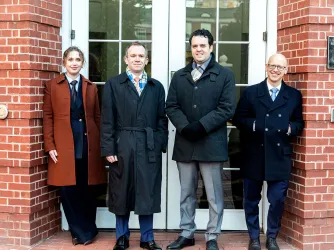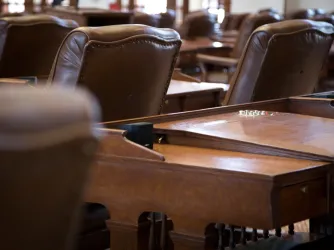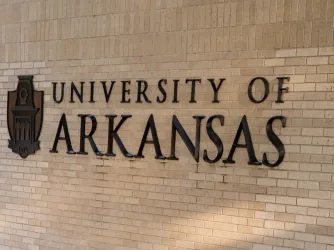Table of Contents
Hamline hiding critical Twitter, Facebook posts amid blasphemy ban controversy

Ken Wolter / Shutterstock.com
Entrance to Hamline University, where administrators are under fire for not renewing the teaching contract of an adjunct professor who showed an image of the Prophet Muhammad in an art history class.
Already embroiled in a high-profile controversy over its firing of an art history professor who showed a medieval masterpiece depicting the Prophet Muhammad, Hamline University — which publicly commits to free expression but privately implements sectarian limits on blasphemy — is now hiding critical posts on its social media.
Since late December, when news broke about the nonrenewal of the adjunct professor, since identified as art history scholar Erika López Prater, Hamline’s social media posts have been inundated with criticism. And as criticism poured in, Hamline University scrubbed it out, hiding critical tweets and Facebook comments replying to its social media posts.

This is most apparent from the university’s Twitter account, where users can still uncover hidden replies if they know to look for a small icon indicating that tweets have been hidden. The replies — hidden from almost every tweet the university has sent in the last month — range in tenor and content. While some are anti-Islamic screeds, some merely republish the image at issue (a widely-shared 14th century painting contained in an Islamic history compendium by Rashid-al-Din), while others offer pointed criticism of the university for violating López Prater’s academic freedom and limiting the material available to students based on their cohorts’ religious beliefs.
The university’s efforts to purge replies on its Facebook posts are less discernible, but there are signs Hamline has been removing posts there, too. This Facebook post about inclement weather, for example, at one point indicated that it has 35 comments. But Hamline has been hiding those comments, including several that had been posted after The New York Times wrote about the matter yesterday.

Universities cannot claim to foster a culture of free expression when they’re sanitizing their social media feeds and shutting down discussion on important campus issues. What message does it send to students and faculty about tolerance for dissent if the university is busily scrubbing criticism from public view? Clearly Hamline faculty do want their voices heard on this issue, as evidenced by the numerous Hamline professors who signed on to our open Faculty Letter to the university president. Their names appear alongside almost 300 other faculty members from around the world.
Hamline is not the first institution to stumble into censorship as a means of suppressing criticism of its censorship. In 2021, as Emerson College faced pushback over its targeting of a conservative student organization that criticized China’s government, the school scrubbed from its social media feeds references to Winnie the Pooh (which are often deployed by dissidents as a caricature of Xi Jinping, president of the People’s Republic of China). And as FIRE found in a 2020 report, public universities often used Facebook’s content filtering tools to automatically hide comments critical of administrators, donors, corporate partners, faculty, and more — with the goal of “transforming their pages from public forums into vehicles for positive publicity.”

Courts have said it violates the First Amendment when government actors engage in this kind of censorship. When public entities — like public universities — open social media forums for discussion, they cannot censor comments or posts because of the views expressed.
Private universities like Hamline don’t have to commit to free expression. We think it’s wise when they do, and most private colleges and universities — including Hamline — pursue that course. After all, a robust free speech culture alongside academic freedom attracts top-notch students and faculty, earns schools prestigious regional accreditation, and gives the institution general credibility.
Hamline says it “celebrates free expression for everyone” and “embraces the examination of all ideas, some of which will potentially be unpopular and unsettling.” But the university’s actions — toward faculty teaching controversial topics and members of the community using social media to hold administrators accountable — suggest the opposite.
FIRE defends the rights of students and faculty members — no matter their views — at public and private universities and colleges in the United States. If you are a student or a faculty member facing investigation or punishment for your speech, submit your case to FIRE today. If you’re faculty member at a public college or university, call the Faculty Legal Defense Fund 24-hour hotline at 254-500-FLDF (3533). If you’re a college journalist facing censorship or a media law question, call the Student Press Freedom Initiative 24-hour hotline at 717-734-SPFI (7734).
Recent Articles
Get the latest free speech news and analysis from FIRE.

VICTORY: Jury finds Tennessee high school student’s suspension for sharing memes violated the First Amendment

FIRE statement on calls to ban X in EU, UK

Another year, another session of AI overregulation


